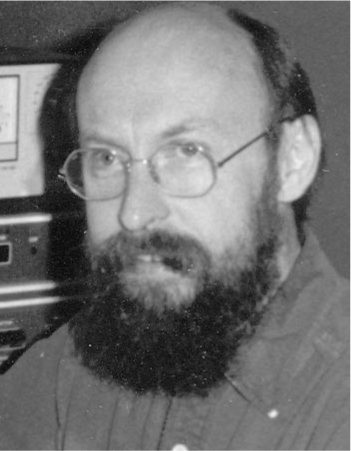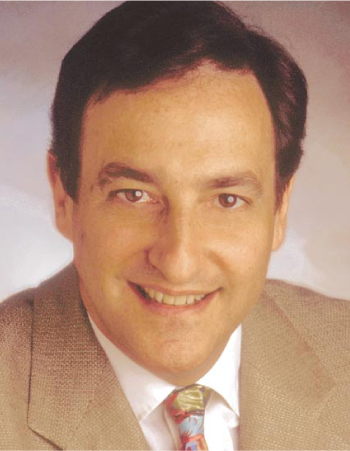Crystallographers Meet in San Antonio
DOI: 10.1063/1.1485586
The American Crystallographic Association (ACA) will hold its annual meeting from Saturday, 25 May, to Thursday, 30 May, in San Antonio, Texas. This year’s meeting is being held in conjunction with the American Association for Crystal Growth (AACG).
Lectures, symposia, poster presentations, and social events will take place at the Henry B. Gonzalez Convention Center. The 10 ACA special interest groups—biological macromolecules, fiber diffraction, materials science, neutron scattering, small-angle scattering, small molecules, synchrotron radiation, service crystallography, general-interest crystallography, and young scientists—have organized most of the extensive program of invited and contributed sessions.
The technical sessions will cover a range of topics that are of interest to crystallographers, including crystal engineering, macromolecular crystallography, structural genomics, protein folding and design, the use of crystallography in drug design, macromolecular motions and dynamic processes, enzyme mechanisms, new structures, cool structures, the connections between structures and materials science, and the effects of scattering on nanoscience and nanotechnology. Sessions on computer and network security, authorship issues, and effective grant writing for structural scientists are also planned. The AACG has planned a series of four sessions for Monday and Tuesday that will focus on the production and study of biomacromolecules. These discussions will include an in-depth look at the properties of solutions and crystal nucleation; crystal growth and perfection; biomineralization; new macromolecular crystals, techniques, and hardware; and high-throughput biocrystallization.
The meeting opens on Saturday with three all-day workshops at the Hyatt Regency San Antonio, which faces San Antonio’s famous Riverwalk. The first, entitled “Practical Structure Solution from Powder Diffraction Data,” is an overview of the software available for solving crystal structures from powder diffraction data. This discussion and demonstration of solution methods will be styled as a tutorial. For information, see http://www.chem.tamu.edu/xray/acaworkshop
A session on computational crystallography honoring Robert Sparks that had been planned for this meeting, is now dedicated to the memory of Sparks and his wife Nonie, who both died in an automobile accident last summer (see Physics Today, March 2002, page 92
Always a highlight of the meeting, the Transactions Symposium, entitled “Crystal Structure Determinations from Powder Diffraction Data, “ is a full-day session scheduled for Tuesday. A number of speakers will discuss the latest techniques in the science of obtaining structural information ab initio from powder diffraction data.
Another highlight of the meeting is the banquet and awards ceremony, which this year will be held beginning at 6:30 PM on Wednesday at the Institute of Texan Cultures. ACA will honor Douglas L. Dorset with the 2002 A. L. Patterson Award for his “fundamental contributions to quantitative electron crystallographic structure determination at atomic resolution.” ACA notes that Dorset “solved a wide range of organic, macromolecular, and inorganic structures from electron diffraction data on a quantitative basis” and, in doing so, “showed the validity and utility of direct methods in phasing electron diffraction data.” Dorset is a senior research associate at ExxonMobil Research and Engineering Co in Annandale, New Jersey.
A special Patterson Award session is scheduled during the meeting. Focusing on electron crystallography and electron microscopy of biological macromolecules, this session is a tribute to Dorset and the areas of crystallography in which he has played a leading role.
ACA will be presenting the Elizabeth A. Wood Science Writing Award, which recognizes “those who excel in bringing science to the attention of a wider audience, “ to Ira Flatow. Flatow is host of National Public Radio’s Talk of the Nation: Science Friday, and president of ScienCentral Inc, a company in New York dedicated to bringing more science news to television.
The recipients of the Pauling, Oxford Cryosystems, and Royal Society of Chemistry Poster Prizes will be announced at the banquet.
Attendees will want to take time to visit the exhibition scheduled to run from Sunday afternoon to Wednesday afternoon in Exhibit Hall D at the convention center. Exhibitors will showcase a wide array of the latest in books, instruments, services, software, and techniques used for sample isolation, purification and preparation, crystal growth and data collection, and retrieval analysis.
On the social side, ACA will host the conference’s opening reception beginning at 6:30 PM on Saturday in the Regency Ballroom at the Hyatt Regency San Antonio.
Senior researchers will join students and postdocs new to the field for the mentor-mentee dinner at 7:30 PM on Sunday at the Buckhorn Saloon and Museum, an establishment that has been in continuous operation since 1881. The young scientists special interest group will hold its YSSIG mixer at 7:00 PM on Monday at a piano bar called the Howl at the Moon Saloon.

Dorset


Flatow

